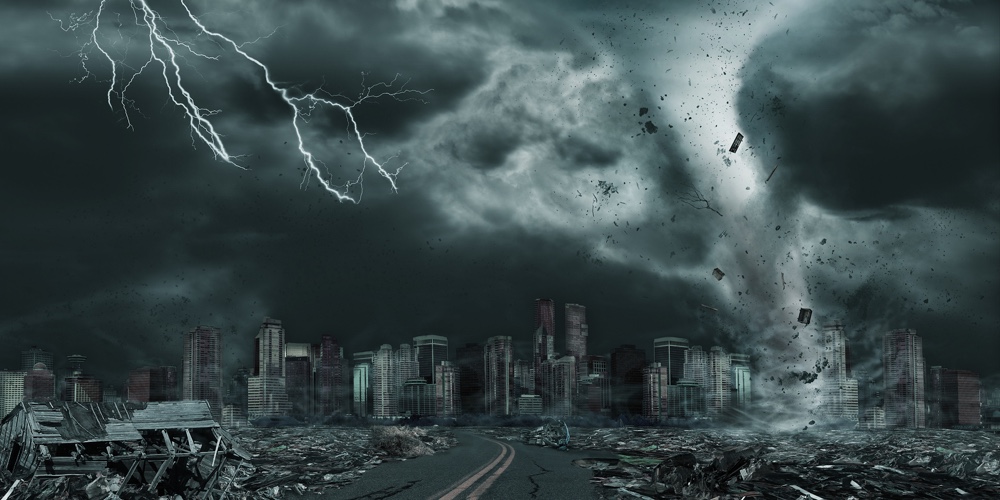AUTHOR’S NOTE: I presented a speech on this topic in early December 2019, before COVID-19 was part of our daily news. Now, with the introduction of COVID-19 and everything it introduced into our world (such as social distancing and shuttered bars and restaurants), the long-term outlook for most commercial sectors turned from unfavorable to bleak. This series presents likely scenarios for certain commercial real estate sectors, as well as actions you should take to prepare your credit union.
PART 1: The perfect storm
To say that modern technologies have changed our way of life is a drastic understatement. Almost no facet of our life has remained unchanged. Amazon has changed the way we shop. Uber and driver-assist technologies have changed how we travel. GrubHub, the way we eat; smart phones, the way we bank; WeWork and Zoom, the way we work.
Changing consumer shopping habits have already started to shape commercial real estate (CRE) . . . think bulldozed shopping malls and empty Toys-R-Us stores. Vacancies in strip centers are above 10% nationally. Coresight Research noted a 60 percent increase in brick-and-mortar locations closed in 2019 as compared to 2018, representing over 9,000 locations shuttered last year. (Please note, these 2019 year-end results are all before the impact of COVID-19).
Another factor – “big money” – indirectly impacts CRE due to its impact on business marketplaces and the ability of those businesses to survive. Vast amounts of “big money” (e.g. venture capital, family funds, etc) are in the market looking for a place to invest their funds. This big money simply has enough capital to outlast the competition. They have moved and will continue moving into industries once occupied by small operators, where they will drive down margins, gain market share, and outlast competition with their deep pockets. As these small operators close, the CRE they owned or leased will flood the market.
And future technological capabilities – particularly 5G and Artificial Intelligence – hold promise for things we can scarcely imagine. These technologies will alter our habits drastically and will do so at a frantic pace. In particular, these technologies will increase activities we “attend” remotely. This remote attendance will be enabled by technology that provides real-time data-sharing, life-form imitations (e.g. holograms), and front-row video replications (realistic and easy-to-use technology that will make it seem like you’re on the front row of any sporting event or concert). As well, this technology will radically transform our Personal Assistants (“PAs” such as Alexa and Siri). Our PAs will learn our habits, and they will then relieve us of many actions we take and mundane decisions we make. They will become our true Personal Assistants, no longer being reactive but instead proactive.
Now, since December 2019, we can add the impact of COVID-19 and other pandemics to the mix. While this pandemic will pass, consumers are likely to steer clear of activities that would expose them to viruses. Practices that will face reduction include:
- Use of sharing economy offerings (e.g. Uber, AirBnB)
- In-restaurant dining (as compared to take-out or delivery)
- Attendance of events with large crowds (such as concerts, conferences, etc)
The shifts in consumer behavior, new technologies, and the impacts of the pandemic have veered us toward new ways of living. I believe we are at an inflection point. I believe in 5-7 years, we’ll look back at this time and we will be amazed at how far things have come and how much our life and our habits have changed.
Based on the above, I am making a call: I believe certain commercial real estate sectors are heading for an apocalypse. By that, I mean that several sectors of commercial real estate will drop in value in the next 5-7 years. Properties in those sectors will only survive via radical transformation to alternative uses.
CRE sectors that are most susceptible to an apocalypse:
- Retail
- Restaurants
- Single-use facilities
- Limited-use facilities (such as our branches)
CRE sectors that are less susceptible to an apocalypse:
- Multi-family
- Light industrial
- Warehousing
- Real estate with experiential uses (e.g. Urban Air, Escape Room Games)
In this series, we’ll explore ideas you can implement to ensure your credit union is well positioned for this CRE apocalypse. The articles to follow are:
- Part 2: Branch Neighborhoods – Who are my branch neighbors and how will my branches fare?
- Part 3: Branches, the Real Estate factor – Assessing the impact on the value of my branch properties
- Part 4: CRE loan portfolios – A look at sectors that will rise and decline, and proactive steps for your commercial loan portfolio
Check back soon for the next part of this series.







